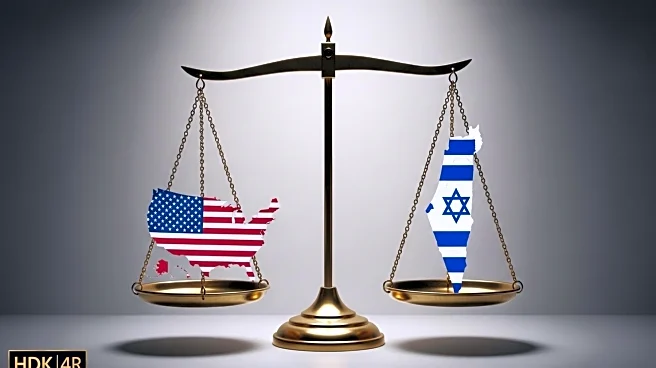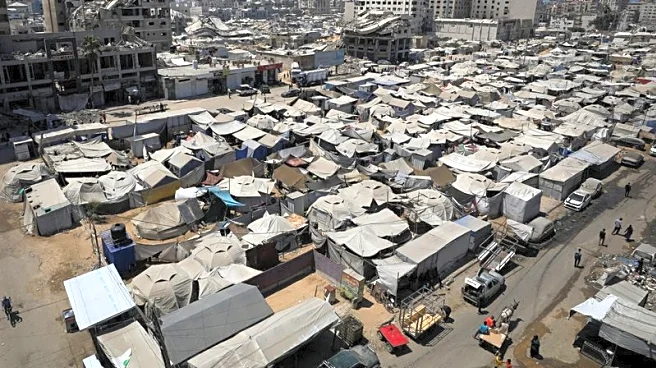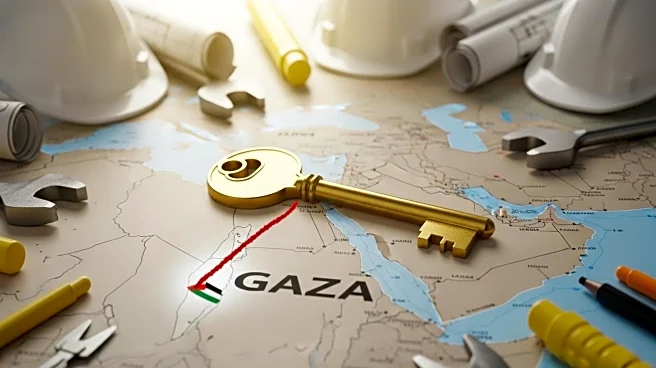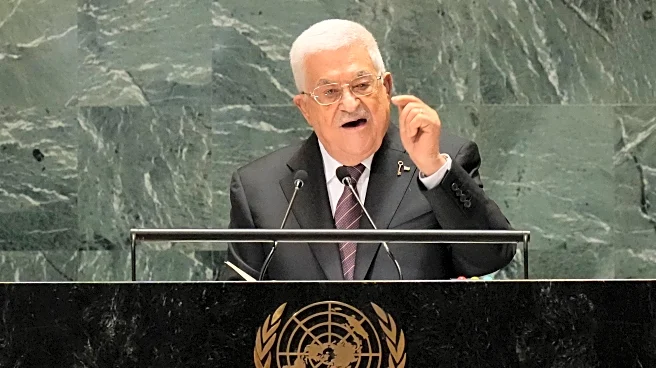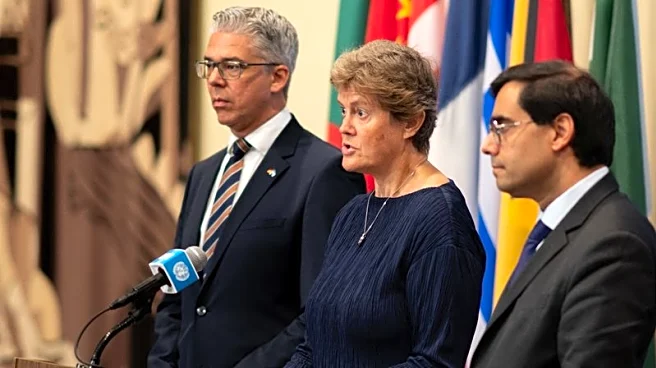What's Happening?
A post-war plan for Gaza, reportedly circulating within President Trump's administration, suggests the U.S. could administer the region for a decade. The plan includes relocating Gaza's population and transforming the area into a tourist and manufacturing hub. According to a 38-page prospectus, the plan involves 'voluntary' departures of Gaza's population, offering digital tokens for land redevelopment, and providing financial incentives for relocation. The proposal, developed by the U.S.-backed Gaza Humanitarian Foundation, aims to rebuild Gaza with U.S. and Israeli cooperation, bypassing the U.N.-led aid system.
Why It's Important?
This plan could significantly alter the geopolitical landscape of the Middle East, affecting U.S. relations with Israel and Palestine. It raises ethical and legal questions about population relocation and the use of digital tokens for land rights. The proposal's focus on economic transformation could lead to new investment opportunities but also risks exacerbating tensions in the region. The plan's reception by international stakeholders, including the U.N. and neighboring countries, will be crucial in determining its feasibility and impact.
What's Next?
The plan's implementation would require extensive diplomatic negotiations and could face opposition from Palestinian authorities and international human rights organizations. The U.S. administration may need to address concerns about the humanitarian and legal implications of the proposed relocations. Monitoring the reactions from key stakeholders, including Israel and Palestinian groups, will be essential in assessing the plan's potential success.



